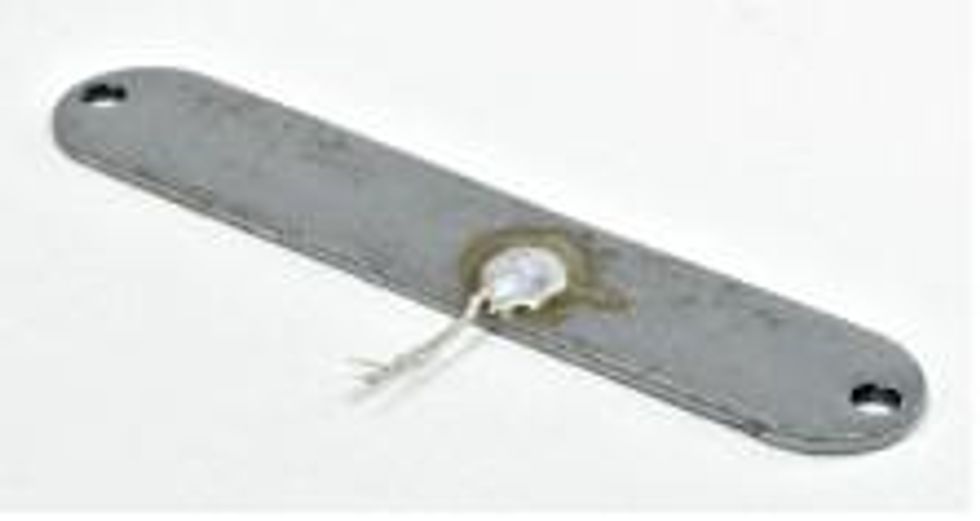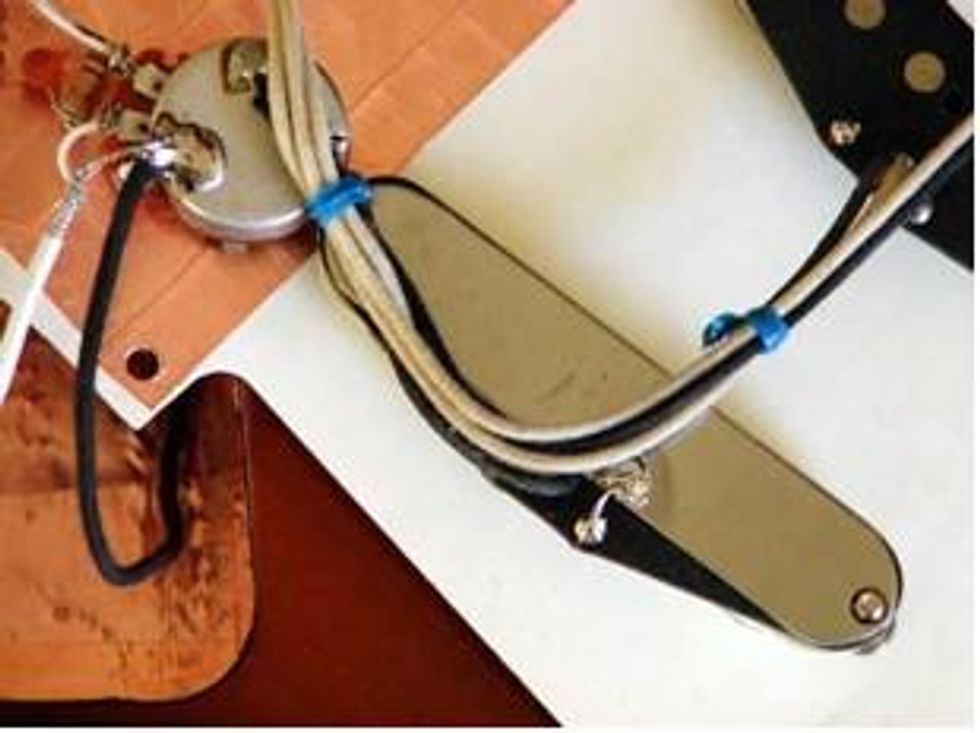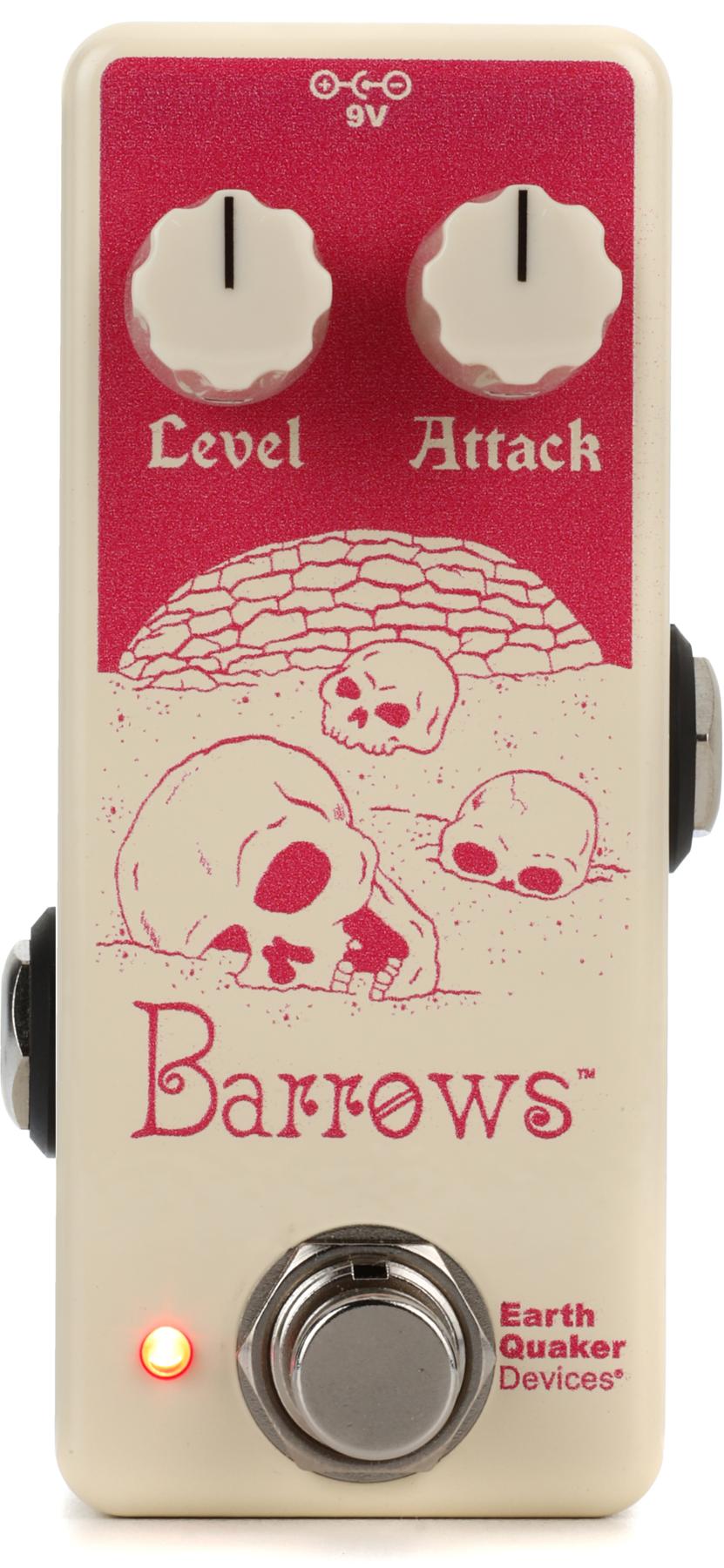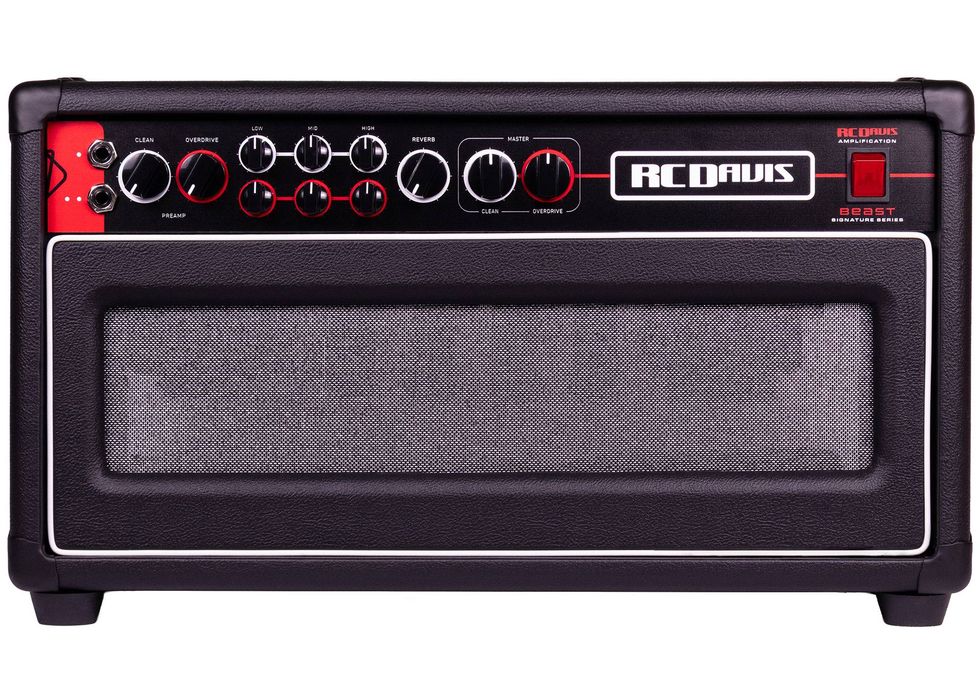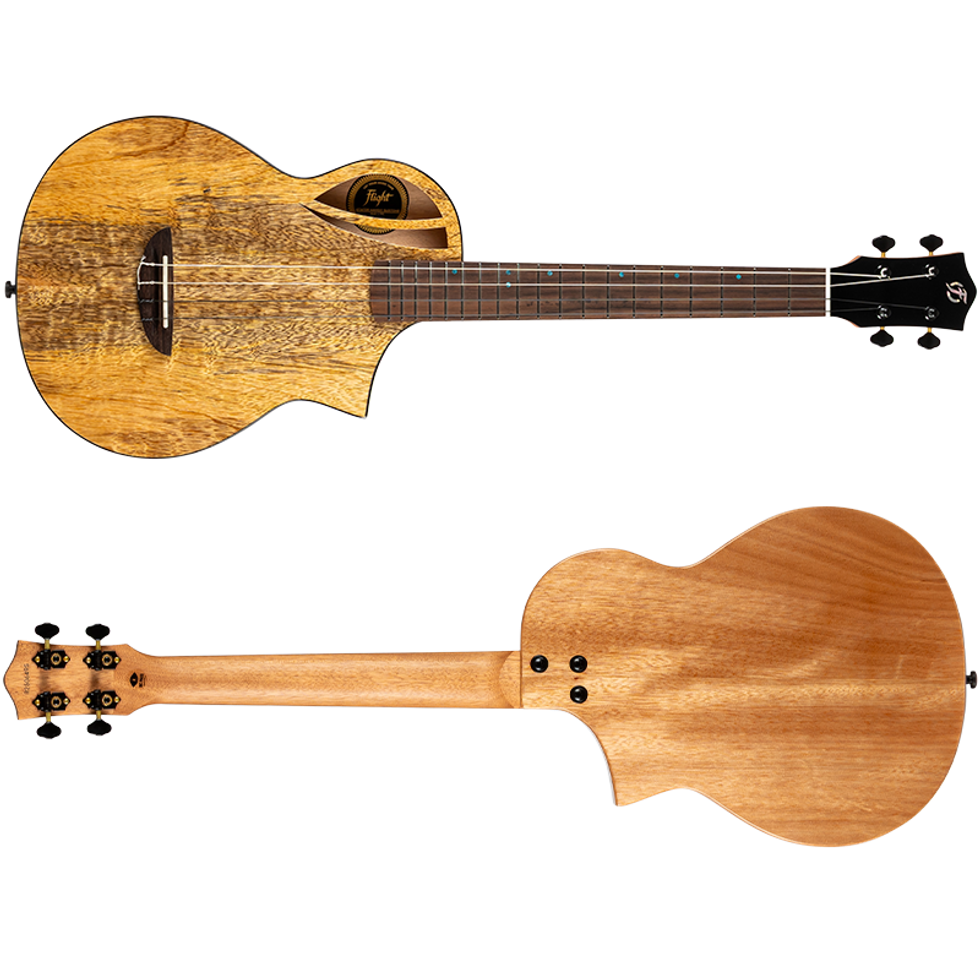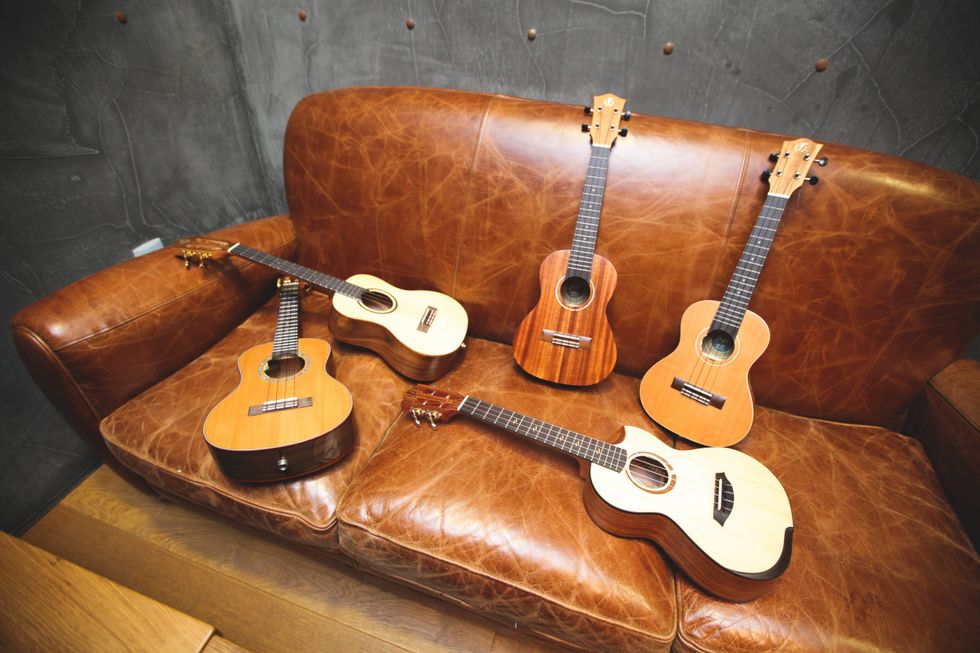After trying some of the tips from last month's column on primary tone, I hope you're inspired to try a few more tone tailoring tricks. Something I am often asked about, as well as being a popular subject in forums, is how to get a stronger sound and more attitude from standard single coil pickups. Typically, single coil pickups aren't very strong and do not distort very well, particularly sought-after vintage models. One way to deal with this is buying hotter, over-wound pickups, but that can get expensive and may or may not be the tone you're looking for. Before shelling out the bucks for a new set of pickups, try a baseplate.
In a nutshell, a baseplate is a piece of steel that attaches to the bottom of a Strat''s bridge pickup, and is then treated to eliminate any microphonic feedback. It's purpose is to fatten up the tone and attenuates the highs of the bridge pickup somewhat, much like the plate on vintage Telecasters. If you find your stock bridge pickup too bright, this may be the solution. In addition to boosting the lows, the mid-range frequencies also get a leg up, resulting in a fatter sound with more depth. In addition, a steel plate focus' the pickup's magnetic field toward the strings, adding more bite and presence.
In addition to tonal enhancements, metal baseplates can provide extra shielding when connected to ground. Depending on the material of the baseplate, it can have ferromagnetic and/or electrodynamic functions. Use the following as a guide:
1. Steel baseplates of the right thickness and material will provide additional shielding as well as ferromagnetic and electrodynamic functions
2. Brass, copper and aluminum baseplates provide extra shielding and electrodynamic functions
3. Alloys of the 300 series – or austenitic – stainless steels provide additional shielding benifits
Getting Grounded
In order to take advantage of the extra shielding a baseplate can provide, it needs to be connected to ground. To accomplish this, simply solder a piece of wire to the baseplate (as shown in the picture above) and connect it to ground, such as the back of a pot, or a solder terminal of the ground wire of the pickup itself – often the black one.
Ferromagnetic Functions
A ferromagnetic steel plate increases the inductance of the coil and will increase and stabilize the magnetic force of the pickup magnets. A steel baseplate also transmits from the steel bridge mount via the steel mounting screws some of the body vibrations into the pickup, another factor in that classic Tele twang. Unfortunately, this can also cause microphonic squealing at high volume levels, but we will provide a solution later on.
Electrodynamic Functions
Baseplates made of steel, copper, brass or aluminum are the cause of eddy current interference. Eddy currents shift the resonances toward the lows, resulting in a fatter, more pleasant tone, especially in the bridge position. If you don't want to increase the inductance of the coil and the magnetic force of the magnets, aluminum and brass baseplates are ideal to fine tune the tone of single coil pickups. These baseplates can be very effective on traditional single coil pickups with alnico magnets, but, depending on the design, the results can also be disastrous. Keep in mind that the thickness of the baseplate is very important - if the plate is too thin, the effect is very little, but if the plate is too thick, you may end up with a muddy pickup.
Installing a Baseplate
To install a baseplate, simply place it underneath your bridge pickup – the magnets will hold it in place. Reinstall the pickguard and put it through its paces. For some pickup screws it may be necessary to enlarge the holes in the baseplate to get a proper fit. If so, try a round file, or a drill press if it's particularly stubborn.
Hopefully, you will now find the pickup to have the sizzle that you've been looking for. Feel free to experiment, they can also be used on the middle and neck pickups. If you like what you hear, pop off the pickguard again and glue the baseplate in place with silicone, wax or glue that will isolate vibration. If you don't, it will squeal like a pig.
Baseplates are available from several suppliers; one being singlecoil.com. Be sure to check out some of the other goodies while you're there!
Until next month, stay tuned!
Dirk Wacker has been addicted to all kinds of guitars since the age of 5 and is fascinated by anything even remotely connected with old Fender guitars and amps. He hates short scales and Telecaster neck pickups, but loves twang. In his spare time he plays country, rockabilly, surf and Nashville styles in several bands, works as a studio musician and writes for several guitar mags. He is also a hardcore DIY guy for guitars, amps and stompboxes in addition to running singlecoil.com.



